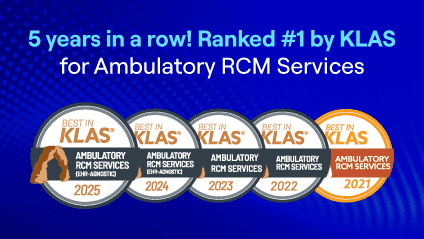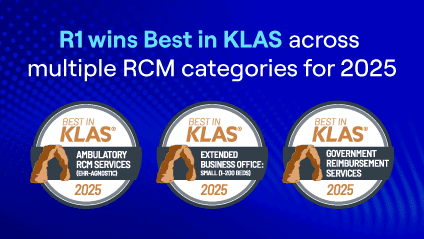An R1 partnership provided a critical access hospital with critical support
Maniilaq Health Center (MHC) provides comprehensive primary and emergency healthcare services and long-term care for approximately 10,000 Alaskan natives within the Northwest Arctic Borough in rural Alaska.
EHR system
Cerner
Patients served
8,000
Bed count
17
Number of employees
550
Pandemic challenges and leadership changes
During the early days of the COVID-19 pandemic, MHC experienced significant staffing shortages in their workforce. Located in a remote geographic location, it was difficult to find experienced revenue cycle talent who also understood the intricacies of healthcare in Indian country. This staffing obstacle created ongoing timing delays and performance struggles. Due to this staffing challenge, MHC looked to a strategic partnership with R1 RCM to problem solve and implement timely resolutions.
High AR days and DNFB volumes
Challenge
MHC recognized there was great opportunity to improve the DNFB that negatively impacted AR days and led to growing instances of insurance AR days greater than 90.
Solution
R1’s first priorities were to focus on the highest-dollar accounts impacting the AR days greater than 90 inventory and DNFB cases. R1 did this by providing strategic guidance in the form of collaboration, weekly audit reports, ongoing identification of client-assist items and establishing improved workflows.
Early in the partnership, R1 and MHC held up to three meetings a week. Leveraging prior workflow experience with other clients, R1 identified proper workflows and helped MHC implement those processes. The frequent touchpoints between R1 and MHC resulted in productive discussions to impact lasting change.
Coding and data
Challenge
MHC faced data-input challenges coinciding with level-of-care payer discrepancies, rendering provider selections and registration errors. These challenges led to payer denials and rejections, which increased the AR days greater than 90 inventory.
Solution
R1 provided support in the form of weekly reports noting client-assist items related to coding, credentialing and registration gaps, as well as chargemaster issues and missing chargemaster medications. Both teams also worked with MHC’s IT department for better automation to improve workflows.
To enhance and support efforts on DNFB reductions, R1 did a review of the most frequent billing edits to identify upstream root cause to reduce the number of required manual-billing touches.
COVID testing
Challenge
At one time, more than 8,000 of the DNFB cases at MHC were comprised of COVID-19 testing encounters due to an upfront workflow put in place to mitigate patient-billing concerns. MHC could only bill payers for patient tests, whereas MHC employee tests had to be offset and addressed in a separate workflow. Due to registration inconsistencies at the time of testing, there was difficulty in identifying the correct workflow that coordinated to a patient or employee, which led to the bills being placed on a long-term COVID hold for manual review. This resulted in untimely delays in bills being held back from payers for processing and payment.
Solution
R1 quickly secured extra resources to help MHC reduce the encounters that were stuck on hold. This effort was comprised of a manual review of more than 8,000 encounters to identify employee status to ensure employee tests were adjusted and non-employee tests were billed to payers.




